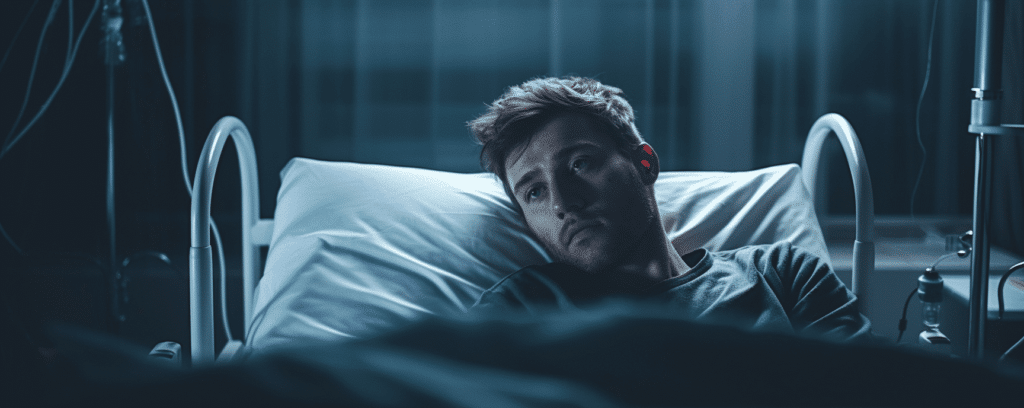Supreme Court Tort Law: Doctor Held Liable For Failure To Inform
Last updated Friday, November 29th, 2024

Justices Also Rule In Interesting Premises Liability Case
By BRENDEN P. LEYDON
The Connecticut Law Tribune
September 19, 2012
The Supreme Court decided several interesting cases regarding tort issues this year.
One recent case(failure to inform) just released in August shed new light on a variety of complex issues. Downs v. Trias, 306 Conn. 81 (2012) arose from the plaintiff’s claim against the defendant physician alleging that his negligence resulted in her developing ovarian cancer. Specifically, the plaintiff claimed that defendant negligently failed to advise her to have her ovaries removed due to her extensive family history of cancer. The defendant physician was appealing from a $5 million dollar jury verdict against him.

Get Your FREE Case Review,
In Person or Virtually Online
The lead issue the defendant presented on appeal was the argument that the plaintiff’s claim did not properly sound in medical negligence but that it should be deemed to sound exclusively in informed consent. As articulated by the Court, the question presented was “may a physician, in failing to provide a patient with information, incur liability for falling short of the professional standard of care? The answer to this question plainly is yes.”
The Court noted that it is fairly common to have an overlap of such causes of action and ruled that when a physician’s negligence causes the physician to fail to provide proper medical information and advice to the patient then either or both causes of action can be pursued. The defendant also complained about the plaintiff being allowed to testify that she would have had her ovaries removed had she been given the proper advice, claiming that this was speculative. The Court rejected this claim, holding that “a lay witness may testify, on the basis of personal knowledge and life experiences, regarding the choices he or she would have made under hypothetical circumstances.”
The defendant also claimed that he was deprived of a fair trial – failure to inform case in multiple ways resulting from a number of trial court rulings restricting counsel from engaging in certain actions in front of the jury. While expressing some concern about the measures adopted by the trial court, specifically precluding counsel from expressing the specific legal basis for their objections, the court held that any impropriety related to that ruling was harmless under the record before the Court.
Soccer Injury
Another interesting recent case is DiPietro v. Farmington Sports Arena, 306 Conn. 107 (2012). In DiPietro, the plaintiff brought a claim for personal injuries to her leg allegedly resulting from the unsafe playing surface used by an indoor soccer facility. The evidence revealed that the surface used was commonly used by facilities in Connecticut as well as by the major indoor soccer league in the United States.
The plaintiff relied on the expert testimony of a biomechanics professor to claim that the carpeting at issue was more prone to causing injuries of the type the plaintiff suffered. Although that expert did some testing after the fact which purported to show a problem with the carpeting, there was no evidence presented of any facts that the defendants either knew or arguably should have known about.

Get Your FREE Case Review,
In Person or Virtually Online
The trial court granted summary judgment, but the Appellate Court reversed. The Supreme Court reversed the Appellate Court and directed that the summary judgment for the defendants be reinstated. The Court’s decision hinged on the fact that the defendants had received no prior notice that the carpeting might be dangerous. The Court made clear there are a variety of ways to establish such notice, “through constructive notice, actual notice, or a foreseeably hazardous mode of operation.”
The Court made clear that the outcome would have been different had the plaintiff been able to offer any evidence of notice, prior similar injuries, governmental or industry standards, articles or other publications, etc., but in the present case(failure to inform) there was simply no such evidence.
Upon first reading the DiPietro case, I was concerned that it seemed to place too much emphasis on industry standards as the benchmark for imposing liability, which conflicts with well established law. As Judge Learned Hand declared long ago “a whole calling may have unduly lagged in the adoption of new and available devices. It never may set its own tests, however persuasive be its usages. Courts must in the end say what is required; there are precautions so imperative that even their universal disregard will not excuse their omission.”
However, after reading the decision more carefully it clearly does not require industry standards or allow industry standards to immutably set a standard of care, it merely points to such standards as one of a number of ways of establishing notice, which also include other similar incidents as noted by the Court, as well as prior cases allowing publications, patents, etc. to establish notice.
The problem with the plaintiff’s case(failure to inform) in DiPietro was the complete absence of any such evidence. The plaintiff’s case centered on the inherent danger of the product, which is an appropriate basis for strict products liability as noted in a footnote in the opinion, but not for premises liability which still requires some element of notice.
Brenden P. Leydon is a member at Wocl Leydon in Stamford, where his practice focuses on personal injury, products liability, appellate advocacy and constitutional law.

